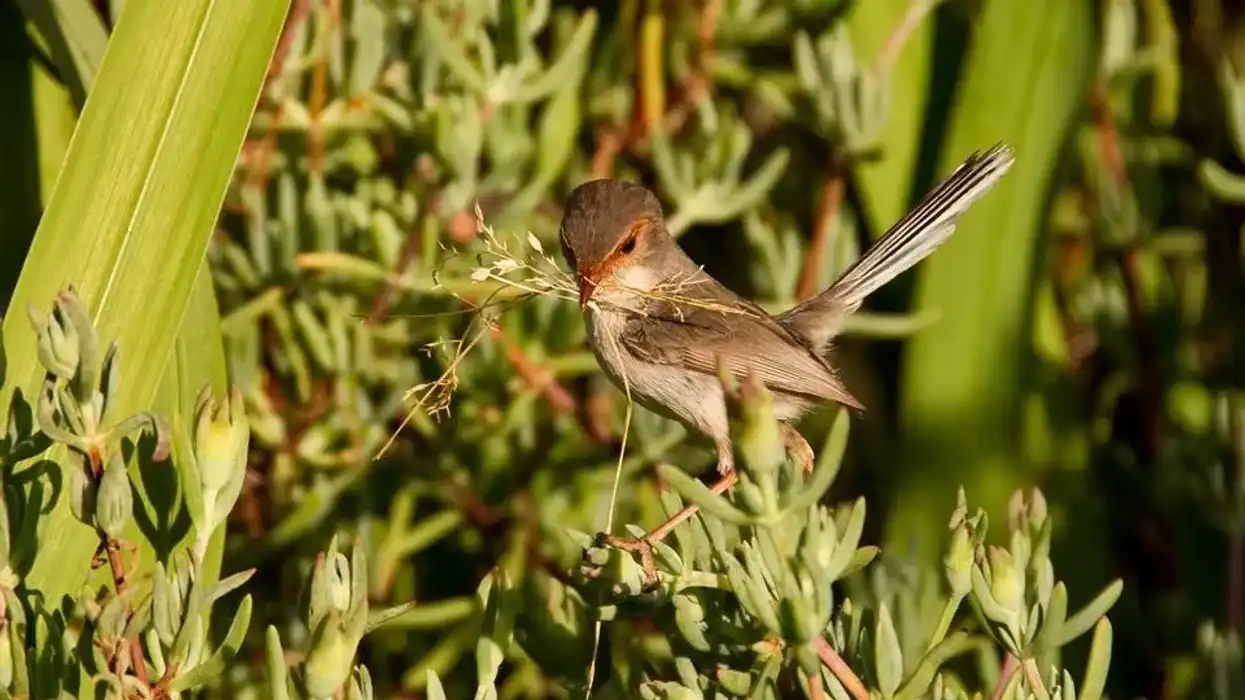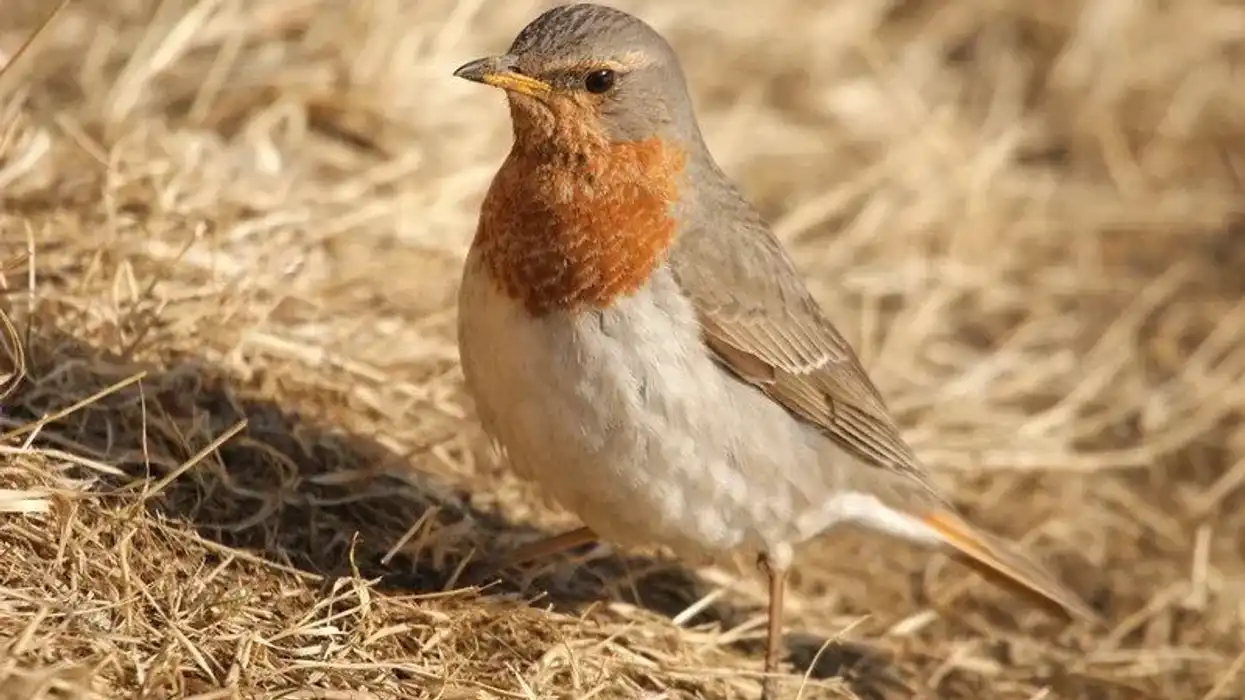The green warblers, or leaf warblers, are various-sized migratory birds belonging to the Phylloscopidae family. These bird species have green plumage, a dash of yellow on the face, and are usually subdued with greenish-grey or greenish-brown colors.
They also have two white with few black stripes on the wing bars, usually, only one of the wing bars is visible and prominent. They are agile and active and primarily feed on small insects hiding below the leaves.
As their habitat, these species use coniferous, deciduous, and mixed forests. The winters are spent by these warblers in the canopies of tall trees.
Their migration range for most warblers starts from parts of the United States to the Indian subcontinent and its surroundings. The breeding season takes place in the spring.
After the spawning process is over, it takes 12 days for the hatchlings to come out and their fledging range varies between eight and 10 days. Though the habitat of warblers is destroyed with each passing day, these birds have a fixed population and are therefore not too rare to find.
Green Warblers hop around forests and fly across open spaces. At dawn and dusk, the males hunt insects and sing to claim their respective territories. To protect their territory, they jab each other with their wings or peck their opponent on the head with their bills. They communicate with songs to attract females and chase away intruders.
Read on to know more fun facts about these birds. If you like this article, then check out palm warbler facts and mourning warbler facts.
Green Warbler Interesting Facts
What type of animal is a Green Warbler?
A green warbler is a type of bird.
What class of animal does a Green Warbler belong to?
The green warbler belongs to the class Aves of animals.
How many Green Warblers are there in the world?
There is no exact number of mature individual green warblers as they are locally common and their current population trend is stable.
Where does a Green Warbler live?
The green warbler is a resident of Armenia, Georgia, and Iran but they migrate up to Afghanistan, Azerbaijan, Tajikistan, Turkey, India, Pakistan, and Sri Lanka. During summer their range extends across Canada from Eastern British Columbia to Alberta in the north and Newfoundland in the east.
Although the black-throated green warbler is a North American bird and they range from parts of the United States but their migratory nature to the eastern world during the winters can also make them birds of the Asian subcontinent.
What is a Green Warbler's habitat?
The green warbler is found in a wide range of forest habitats, shrublands, and wetlands. The breeding range of these species is from northeastern Europe to subtropical continents in Asia.
The bird builds its nest in coniferous forests, mixed hardwoods, and cypress swamps. These warblers are mostly found in the Nearctic Range. During the winters, they migrate to India and its surroundings, where they are found in the canopies of tall trees.
Who do Green Warblers live with?
After breeding, green warblers remain in pairs until the hatchlings leave the nest and while migrating they remain in a flock that often gets mixed with other species.
How long does a Green Warbler live?
The average life span of these birds is around five years. Every year, 67% of adult green warblers survive.
How do they reproduce?
The mating system of green warblers is monogamous. The mating season occurs in the spring season between April and May.
Males are known to reach the breeding ground early, followed by the females. The nest-building process is done by both males and females.
Then the females choose the nest site, which is usually around 10 ft off the ground, sometimes higher, in a sapling that is located close to the trunk of the tree. These species form a pair for a single mating season and the mating process begins with the adult males fluffing their feathers to attract the females.
After choosing the mates and completing the spawning process, the male stays near the nest to help the female.
These birds have a clutch size of three to five eggs. Incubation continues for 12 days, the hatchlings come out and the nestling period continues for up to 10 days.
The parents carry the food in their bill and place it in the bill of the young ones. Once the hatchlings leave the nest the mating pair separates.
What is their conservation status?
The conservation status of the green warblers is of Least Concern as listed by the International Union for Conservation of Nature, or the IUCN, Red List. They have an increasing pattern in their population by an estimated 41%. This group of birds estimates a global population of about 8.7 million. Although, degradation and loss of habitat is an issue.
Green Warbler Fun Facts
What do Green Warblers look like?

Green warblers are plump and seemingly large-headed, with a thick, straight, and dark bill and a yellow-washed face running through the throat up to the breast. The upper parts of these species are visibly greener with two distinct white wing bars, the second wing bar being the thicker and more prominent one.
On the other hand, the black-throated green warbler has a black chin, and a black throat, and their undersides are mostly white with black lines running down the sides.
Mature female birds are similar to the males except they are not as bright. The young ones have a yellowish belly rather than a white one and have no black patches on their wings.
How cute are they?
The green warbler is a cute, little bird with a greenish body, a yellow face, and gray and white striped wings.
How do they communicate?
The warbler family, they have different kinds of tunes for communication. The green warbler, or leaf warbler, communicates with their loud, fast, trisyllabic call known as 'chi-su-wi' which is delivered so fast that it sounds like a slurred note.
Whereas black-throated green warblers communicate by singing a song known as an 'unaccented song' and an 'accented song' to protect their territorial boundaries and to communicate with their partners nearby respectively.
During the mating process, visual communication is displayed by the males by fluffing their feathers to attract the female birds. The green warbler, on the other hand, has a collection of tunes with which they create a melody by stringing tones together in various ways.
How big is a Green Warbler?
A green warbler is 4.7-5.1 in long. It is almost five times smaller than a crow which is 22-34 in (56-86 cm) in length.
How fast can a Green Warbler fly?
Green warblers can fly around 25 mph (40 kph) while they are migrating. They usually migrate in a flock, mingling with other species.
How much does a Green Warbler weigh?
The green warbler weighs around 0.3-0.4 oz or (8.5-11 g). These are small birds and they have a length of 4.53-5.51 in, and a wingspan of 6.69-7.87 in.
What are the male and female names of the species?
The male and female names of these species are cock and hen respectively.
What would you call a baby Green Warbler?
A baby green warbler is called a hatchling or a chick.
What do they eat?
Their diet includes animal foods such as insects, terrestrial non-insect arthropods, and plant foods such as fruit and pollen. During migration, they also eat poison ivy berries as well as the pollen of Cecropia trees. They exclusively feed on insects during the breeding season.
Are they friendly?
As these green warblers are solitary, territorial, and migratory birds they are not friendly.
Would they make a good pet?
The species of green warbler won't make a good pet as they are mostly migratory birds and solitary. These birds don't bother humans but they are extremely protective of their nests.
Did you know...
Sharp-shinned hawks are the biggest threat to these bird species.
Green warblers bathe during the day, immersing themselves in the water and splashing the water all over their body by shaking.
The Green Warbler's call
The male green warblers are very energetic singers, they use songs to attract their female partners as well as to defend their territories from intruders. These birds are best identified by their loud, fast, trisyllabic call known as 'chi-su-wi'.
The call of this species is delivered so fast that it sometimes sounds like a slurred note. However, the male black-throated green warbles communicate by singing typically two types of melody known as 'unaccented song' and 'accented song'.
The first type is sung by these birds to chase away intruders from their territories and the latter is sung to attract the females. Female birds also use different tunes to distinguish among potential partners.
What does warbler mean?
The word warbler means insectivorous songbirds who typically sing softly with constant changes in the notes. Green warblers are active singers with warblings tunes.
Here at Kidadl, we have carefully created lots of interesting family-friendly animal facts for everyone to discover! Learn more about some other birds including yellow warbler facts, or magnolia warbler facts.
You can even occupy yourself at home by coloring in one of our free printable green warbler coloring pages.










